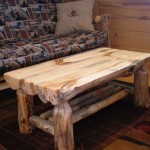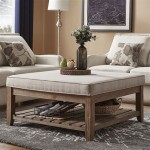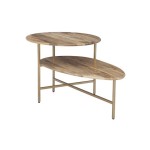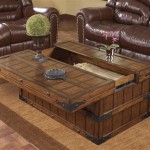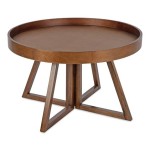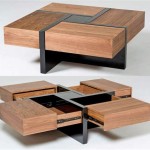Danish Coffee Table: A Timeless Addition to Any Living Space
With their clean lines, simple designs, and warm, inviting appeal, Danish coffee tables have become a staple in modern living spaces. These versatile pieces not only elevate the aesthetics of a room but also provide functional surfaces for everyday use. In this article, we'll delve into the world of Danish coffee tables, exploring their history, design principles, and how to choose the perfect one for your home.
A Glimpse into the History of Danish Coffee Tables
The rise of Danish coffee tables can be traced back to the mid-20th century, coinciding with the emergence of Danish Modernism, a design movement that emphasized simplicity, functionality, and natural materials. Danish designers, inspired by traditional Scandinavian craftsmanship and the Bauhaus movement, created furniture pieces that were both aesthetically pleasing and practical.
Key Design Principles of Danish Coffee Tables
- Simplicity: Danish coffee tables are characterized by their understated elegance, with clean lines and minimalist forms.
- Functionality: These tables are designed with practicality in mind, offering ample surface space for everyday activities such as setting down drinks, books, or decorative items.
- Natural Materials: Danish coffee tables often incorporate natural materials like wood, leather, or glass, which lend warmth and a sense of connection to nature.
- Craftsmanship: Attention to detail is a hallmark of Danish coffee tables. Skilled artisans meticulously construct these pieces, ensuring durability and longevity.
Choosing the Perfect Danish Coffee Table for Your Home
When selecting a Danish coffee table, consider these factors:
- Size and Shape: Choose a table that is proportionate to the size of your living space. Rectangular tables are common, but round or oval shapes can add a touch of softness and visual interest.
- Material: Wood is a popular choice for Danish coffee tables, offering warmth and a classic look. Glass tables can create a more modern and airy feel.
- Style: Whether you prefer a traditional or contemporary style, there's a Danish coffee table to match your taste. Look for pieces with unique details, such as tapered legs or contrasting materials.
- Functionality: Consider how you'll use the coffee table. If you need extra storage, opt for a table with drawers or shelves.
Caring for Your Danish Coffee Table
To maintain the beauty and longevity of your Danish coffee table, follow these care tips:
- Clean Regularly: Wipe the table surface with a soft, damp cloth to remove dust and spills. Avoid using harsh chemicals or abrasive cleaners.
- Protect from Heat and Water: Use coasters under drinks and place hot items on a heat-resistant surface to prevent damage.
- Avoid Direct Sunlight: Prolonged exposure to sunlight can cause wood to fade or discolor. If possible, position the table away from direct sunlight.
Conclusion
With their elegant designs, functional surfaces, and timeless appeal, Danish coffee tables are a valuable addition to any living space. Whether you're looking for a classic wood table or a more modern glass piece, there's a Danish coffee table that will complement your home décor and provide years of enjoyment.

Mid Century Danish Coffee Table By Arne Hovmand Olsen For Mogens Kold 1960s At Pamono

Sizeable Danish Coffee Table In Teak Moz

Danish Coffee Table In Teak And Rattan By K T Mobler 1960s For At Pamono

Mid Century Danish Modern Teak Coffee Table Hong Kong

Danish Coffee Table L75

Mid Century Modern Coffee Table With Danish Cord Shelf Harrismade

Danish Designed Mid Century Coffee Tables Mostly

Mid Century Danish Sculpted Teak Coffee Table With Slatted Shelf Chairish

Danish Coffee Table By Gunnar Schwartz 1960s For At Pamono

Danish 1950 S Designer Smile Coffee Table 20th Century Scandinavia

